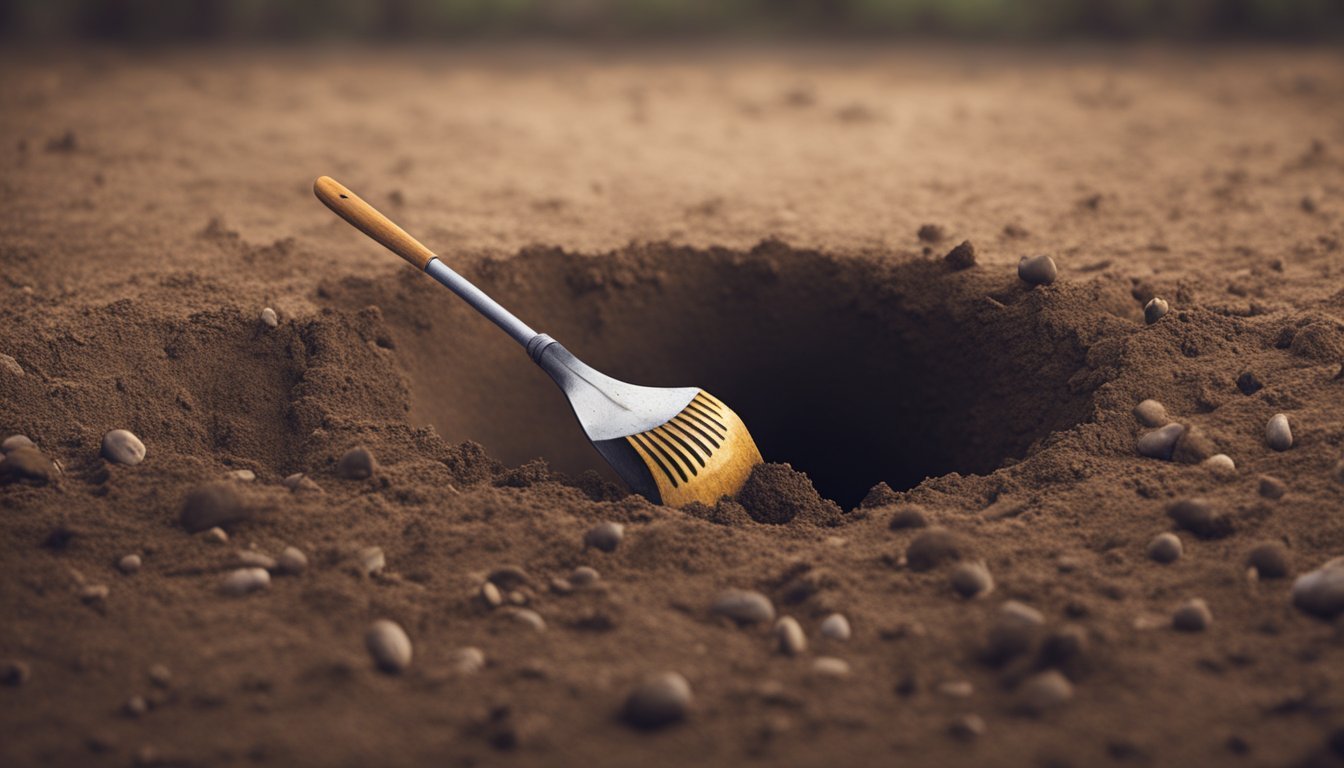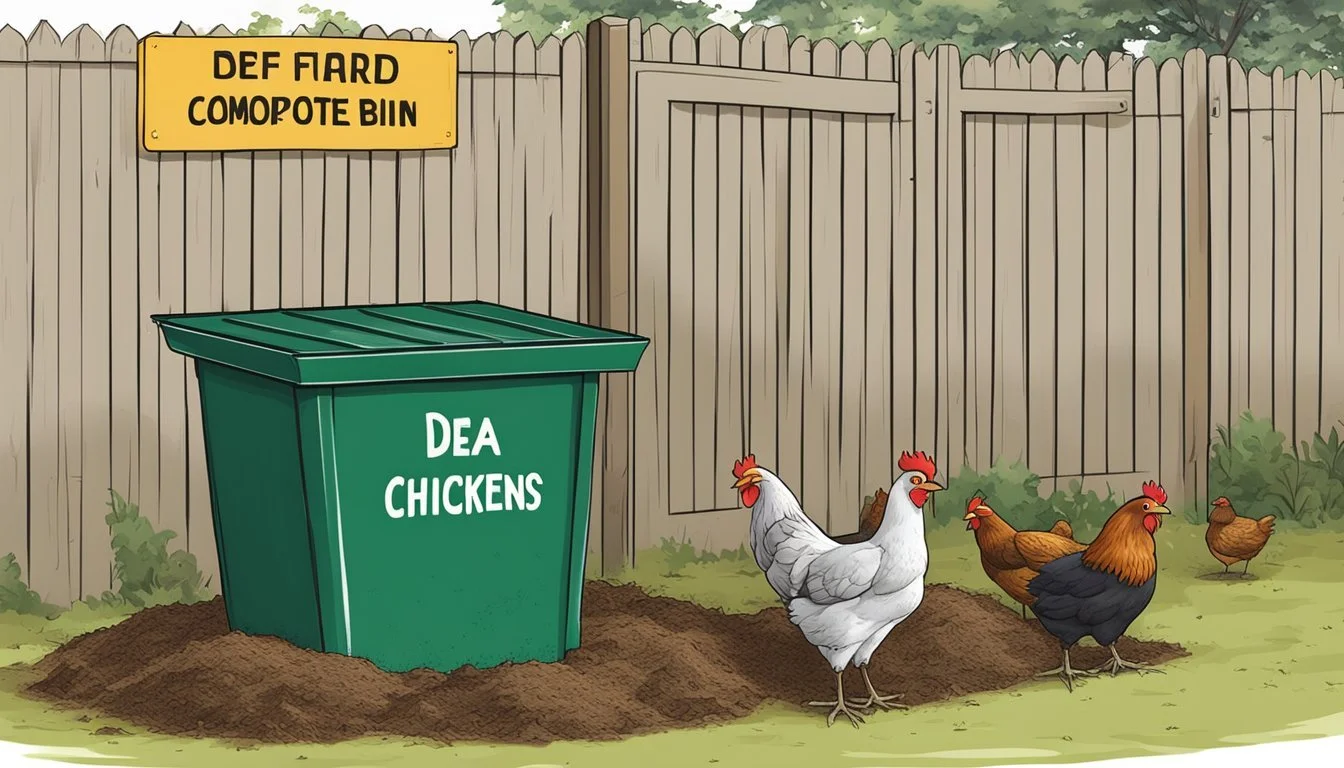What is the Proper Way to Dispose of a Dead Chicken?
Safe and Sanitary Methods Explained
When managing a flock of chickens, it is important to consider all aspects of their care, including the unfortunate event of death. Backyard chicken enthusiasts and farmers must know the proper way to dispose of a dead chicken to ensure biosecurity, comply with local regulations, and maintain the health of their environment. Improper disposal can lead to the spread of disease, attract scavengers and pests, and potentially contaminate soil and water sources.
There are several methods to dispose of dead poultry safely. One can choose between burial, incineration, composting, or rendering. Each method has its pros and cons, and the choice often depends on local laws, the size of the poultry operation, and personal preferences. Understanding the available options allows for responsible handling of the situation, showing respect for the animal and care for the ecosystem.
The goal is to prevent any negative impact on the surrounding environment or other animals in the vicinity. Safe disposal helps to maintain the health of the remaining chickens and ensures that farm management practices adhere to ethical standards.
Understanding the Importance of Proper Disposal
Proper disposal of dead chickens is crucial for several reasons. Improper handling can lead to the spread of disease, negatively impact the environment, and pose a risk to public health.
Disease Control: A decaying carcass can harbor bacteria and viruses, which can infect other animals or even people. To prevent the spread of illness, one should ensure the chicken is disposed of safely.
Environment Protection: Decaying matter can contaminate soil and water sources. By following recommended disposal methods, individuals contribute to maintaining a healthier ecosystem.
When considering how to dispose of a dead chicken, the aim should be to minimize potential harm. Burying is a commonly suggested method. It involves digging a hole at least two feet deep to prevent other animals from unearthing the remains. This practice keeps the remains enclosed, reducing the chance of disease transmission and environmental contamination.
However, some may live in areas where local regulations or practical considerations make burial unfeasible. In such cases, seeking other lawful and safe disposal methods is imperative. Whether through burial or alternative methods, understanding and implementing the proper steps to dispose of poultry remains is an important responsibility for owners and handlers, ensuring safety for all.
Legal and Regulatory Considerations
When disposing of dead chickens, it is essential to consider local laws and regulations, which vary by location. They are designed to prevent environmental contamination and the spread of disease. Here are the key aspects:
Local Regulations: Municipalities often have specific ordinances in place. For example, some regions may require carcasses to be buried at least two feet deep to prevent scavengers from unearthing them. Others might mandate particular disposal methods like composting or incineration.
State Laws: State Departments of Agriculture or Environmental Protection Agencies set broader guidelines on mortality disposal. They may dictate the distance from water sources or residences where disposal sites can be located to protect water quality and public health.
Animal Control Laws: In certain jurisdictions, animal control laws may impact disposal methods. They can include penalties for improper disposal which might attract pests or create a public health nuisance.
One should consult the Clemson University PDF for an overview of acceptable practices. Additionally, resources like the Penn State Extension website provide educational materials about state-approved disposal methods.
Compliance ensures one is following ethically responsible and environmentally sound practices. It is the responsibility of the chicken owner to stay informed about current regulations and to apply approved disposal methods accordingly. Failure to comply with legal directives can result in penalties, impact environmental sustainability, and affect local ecosystems.
Assessing the Cause of Death
When a chicken dies, identifying the cause of death is a crucial step before proper disposal. A comprehensive assessment ensures the health of the remaining flock and determines the appropriate disposal method.
Visual Inspection: First, one should examine the chicken for any signs of trauma or injury that may suggest a predator attack. Clues such as wounds, missing feathers, or signs of a struggle often point to predation.
Behavioral History: Recalling recent behavior can offer insights. Changes in activity, appetite, or social interaction might indicate an illness.
Environmental Scan: Checking the coop and surrounding area for hazards such as toxic plants or unsafe materials is essential. Exposure to environmental toxins could be a fatal risk.
Necropsy: For those equipped with the knowledge of poultry anatomy or by seeking veterinary assistance, a necropsy is an in-depth method to understand the cause of death. It may reveal hidden diseases or internal damage not apparent through external examination.
Procedures for determining the cause of death:
Visual Inspection
Check for signs of bleeding or injury.
Observe for any external parasites.
Behavioral History
Note any lethargy or unusual behavior.
Environmental Scan
Inspect coop for toxic substances or harmful objects.
Necropsy (if qualified)
Conduct an internal examination.
Unexplained deaths or illness-related fatalities should be handled with caution due to the risk of disease transmission. If an illness is suspected, consulting a veterinarian can provide clarity and prevent further loss within the flock.
Methods of Disposal
Proper disposal of a dead chicken is vital to prevent the spread of disease, protect the environment, and adhere to local regulations. Below are the commonplace methods for handling the carcass of a chicken.
Burial
Burial is a time-honored method for disposing of dead chickens. To effectively bury a chicken, it's essential to dig a hole at least two feet deep to deter predators and avoid contamination of groundwater. Protective measures include lining the bottom with rocks or wire mesh to prevent digging by animals. Burying is suited for those living a sustainable lifestyle and preferring natural decomposition processes.
Composting
Composting represents an environmentally friendly approach to convert a dead chicken into nutrient-rich soil. This method involves layering the chicken with organic materials like straw or leaves. It's crucial to maintain the compost's proper temperature and moisture to accelerate decomposition and kill any parasites.
Incineration
Incineration is a biosecure disposal method that involves burning the carcass at high temperatures. It effectively destroys parasites and disease, rendering the remains sterile. This method is often regulated and requires special facilities or equipment to ensure environmental safety standards.
Rendering
Rendering is a disposal process that transforms dead chickens into useful by-products such as feather meal or biofuel. It entails sending the carcass to a rendering plant, which safely and effectively manages the conversion, ensuring that diseases don't spread through improper disposal.
Landfill Disposal
Disposing of dead chickens in a landfill is a method typically used when other options aren't available. It's imperative to ensure that the chosen landfill can handle animal waste and to follow any specific regulations for placing the carcass in heavy-duty plastic bags to dispose of dead chickens responsibly.
Preventive Measures for Backyard Chicken Owners
Backyard chicken owners should prioritize preventive measures to safeguard their flocks from common risks, such as predators, parasites, and diseases, by employing effective strategies.
Predator Prevention:
Secure Housing: Ensure the chicken coop is sturdy and gaps are sealed to prevent entry.
Fencing: Install fencing that is dug into the ground to deter digging predators.
Locks: Use predator-proof locks on coop doors to keep chickens safe overnight.
Parasite Control:
Regular Checks: Regularly inspect chickens for signs of parasites like mites or lice.
Clean Coop: Maintain cleanliness in the coop to create an environment that's inhospitable to parasites.
Diatomaceous Earth: Consider dusting with food-grade diatomaceous earth to control parasites.
Disease Prevention:
Vaccination: Stay up to date with recommended vaccinations against common poultry diseases.
Quarantine New Birds: Always quarantine new arrivals for at least 30 days before introducing them to the flock.
Hygiene: Practice good hygiene by cleaning feeders, waterers, and changing bedding regularly.
Additional Measures:
Feed Storage: Store feed in airtight containers to prevent contamination.
Water Quality: Provide fresh, clean water daily to prevent the spread of disease through contaminated water.
By implementing these measures, backyard chicken owners can significantly reduce the risks of predation, parasitic infestations, and disease within their flocks, contributing to the health and longevity of their birds.
Additional Services for Dead Chicken Disposal
When a backyard chicken passes away, owners may consider several additional services to ensure respectful and appropriate disposal. Among these, pet cremation services are often an option provided by local businesses specializing in animal aftercare. These services offer individual or communal cremation, ensuring that the chicken is handled with dignity.
Local veterinarians may also provide disposal services or can at least advise on the best course of action. They are knowledgeable about local regulations regarding animal disposal and are equipped to offer professional guidance. Some may even offer cremation services themselves or be able to recommend a reputable provider. Connecting with a local vet ensures that any health concerns, such as disease control, are professionally managed.
Services available:
Pet Cremation Services
Individual Cremation
Communal Cremation
Local Vet Assistance
Professional Guidance
Health Concerns Management
Utilizing these services often comes with a fee, and owners should be prepared for this expense. When selecting a service, it's important to inquire about the process, including how remains are handled afterward, to ensure it aligns with personal wishes and local laws.
Community Considerations
When disposing of a dead chicken, individuals should take into account community standards and regulations, which may vary depending on the location. Neighborhood associations often have specific guidelines to ensure that the disposal methods do not affect the local environment or the well-being of the community's residents.
Disposal methods must align with both local bylaws and health recommendations to prevent the spread of disease or attracting predators and pests. Here are common community-focused considerations:
Consult Neighborhood Regulations: Always check with the neighborhood association or local authority for permitted disposal methods.
Inform Nearby Residents: If burying a chicken, inform adjacent neighbors to prevent any concerns over unexpected disturbances or odors.
Choose the Right Location: Select a burial site that is away from water sources and community spaces to reduce the risk of contamination.
Depth of Burial: Bury the carcass at least two feet deep to deter scavengers, and consider covering the site with rocks or a heavy object.
Consider Public Health: For dead pets, especially chickens that may have died from disease, it's crucial to handle the carcass with gloves and minimize contact, thereby safeguarding community health.
In the table below, key points are outlined for quick reference:
Consideration: Neighborhood Regulations
Action Required: Confirm guidelines with local authorities
Consideration: Informing Residents
Action Required: Notify adjacent neighbors of the burial
Consideration: Burial Location
Action Required: Choose an area away from water sources
Consideration: Depth & Covering of Grave
Action Required: Ensure a depth of two feet and cover
Consideration: Public Health
Action Required: Handle with gloves; avoid direct contact
By following these steps diligently, the community can rest assured that the disposal of dead chickens is handled in a responsible and respectful manner.




